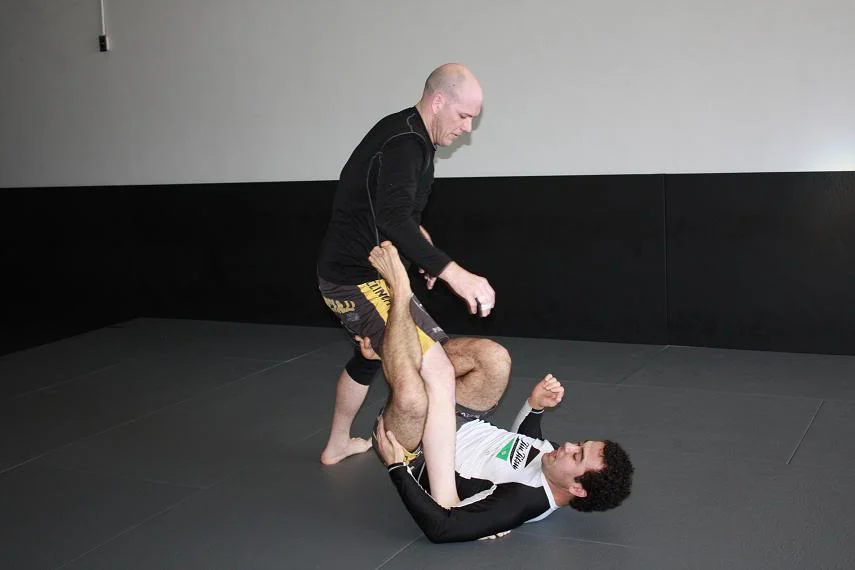The x guard is a highly effective guard position in Brazilian Jiu-Jitsu that allows the practitioner to off-balance their opponent and create opportunities for sweeps and submissions. In this blog post, we’ll explore the key concepts, techniques, and tips for mastering the x guard, and how it can benefit your overall BJJ game.
Understanding the X Guard
The x guard is a guard position where the practitioner uses their legs to control their opponent’s leg, creating a “cross” shape between their legs. To effectively control your opponent, it’s important to understand the main components of the x guard, including grips, foot placement, and body positioning. One of the most important aspects of the x guard is maintaining a strong grip on your opponent’s leg, which can be achieved through various grip configurations, such as the heel hook grip, the ankle grip, or the pants grip. Additionally, foot placement is critical in the x guard, as it helps control the distance and direction of your opponent’s movements. Finally, your body positioning should be angled towards your opponent, with your hips and shoulders aligned with their leg to maximize control.
Setting Up the X Guard
To enter the x guard, you can use various techniques from different guard positions. For example, you can enter the x guard from a butterfly guard, by hooking your foot around your opponent’s knee and pulling them towards you. Alternatively, you can enter the x guard from a half guard, by using an underhook to control your opponent’s far arm and hooking your foot behind their knee. You can also enter the x guard from standing, by using a single leg takedown or a foot sweep. It’s important to anticipate your opponent’s reactions and adjust your positioning accordingly, as they may try to counter your entry by stepping back or passing your guard.
Sweeping from the X Guard
The x guard provides a variety of sweeping options, including the x sweep, the flower sweep, and the waiter sweep. The x sweep is a powerful sweep that involves using your legs to off-balance your opponent and sweep them over your head. The flower sweep involves using a similar motion to the x sweep, but with the addition of a push-pull motion to create a stronger sweep. The waiter sweep involves using your legs to control your opponent’s far arm, while simultaneously sweeping them in the opposite direction. To execute these sweeps effectively, it’s important to maintain a strong grip on your opponent’s leg, and to use your other hand to control their upper body or assist in the sweep.
Submitting from the X Guard
While the x guard is primarily used for sweeping, it also offers a few submission opportunities, such as the ankle lock and the armbar. The ankle lock involves applying pressure to your opponent’s ankle joint by locking their foot between your armpit and hip, while pulling their toes towards their shin. The armbar involves controlling your opponent’s arm and transitioning to a traditional armbar position, while maintaining control of their leg with your other leg. To execute these submissions effectively, it’s important to maintain a strong grip on your opponent’s leg, and to transition smoothly from the x guard to the submission.
Techniques and transitions from the X Guard
In this section, we’ll explore some of the most effective techniques and transitions that can be executed from the X Guard position. By mastering these techniques, practitioners can effectively sweep, submit, or transition to other positions from the X Guard.
Once you have established the X Guard, you have a wide range of offensive and defensive techniques at your disposal. Some of the most common techniques include:
-
X Guard Sweep – The X Guard sweep is a highly effective technique that involves using the legs to off-balance the opponent and then sweeping them to the side. The key to this technique is maintaining control of the opponent’s leg and keeping a tight grip on the ankle or knee.
-
X Guard Ankle Lock – Another effective technique from the X Guard is the ankle lock. This technique involves controlling the opponent’s leg and then applying pressure to the ankle joint to force a submission. It’s important to maintain control of the opponent’s leg and to use proper technique to avoid injuring yourself.
-
X Guard Triangle – The X Guard triangle is a highly effective submission technique that involves controlling the opponent’s leg and then transitioning to a triangle choke. This technique requires good control of the opponent’s leg and solid technique to properly apply the choke.
In addition to these techniques, there are also numerous transitions that can be executed from the X Guard, including transitioning to other open guard positions, transitioning to the half guard, or transitioning to the back take. By mastering these techniques and transitions, practitioners can become highly effective from the X Guard position and use it to control and submit their opponents.
Common mistakes to avoid in the X Guard
- As with any technique, there are common mistakes that practitioners make when attempting the X Guard. Some of the most common mistakes include:
- Failing to maintain proper control of the opponent’s leg, which can result in the opponent being able to escape or counter the position.
- Neglecting to keep a tight grip on the ankle or knee, which can make it difficult to execute sweeps or transitions to other positions.
- Forgetting to maintain a strong base and posture, which can leave the practitioner vulnerable to being swept or submitted.
- Focusing too much on offense and not enough on defense, which can lead to leaving openings for the opponent to attack.
- Failing to adapt to the opponent’s movements, which can make it difficult to maintain the X Guard and execute techniques effectively.
- Using excessive force or relying solely on strength rather than technique, which can lead to exhaustion and ultimately hinder performance.
By being aware of these common mistakes and actively working to avoid them, practitioners can improve their X Guard game and increase their success rate with this technique.
Conclusion
The X Guard is a highly effective and versatile position in Brazilian Jiu-Jitsu, offering a wide range of offensive and defensive options for practitioners. By mastering the key concepts, techniques, and transitions associated with the X Guard, practitioners can gain a significant advantage over their opponents and improve their overall performance on the mats. By keeping these six headings in mind, practitioners can easily remember and apply the key components of the X Guard in their training and competition. So next time you find yourself in the X Guard position, remember these tips and techniques and make the most out of this powerful BJJ position.
Hey there! Just a heads up that some of the links in this post are affiliate links, which means that if you click on them and make a purchase, I may earn a commission. But don’t worry, it won’t cost you anything extra – in fact, you might even get a sweet deal! Plus, every purchase made through one of these links helps support my blog and keep the content coming. So, if you do decide to make a purchase, thank you so much for your support – it means the world to me!
All the best,
Will








Pingback: Mastering the Dogfight Sweep: A Guide to Effortless Sweeping – Jiu Jitsu Hub